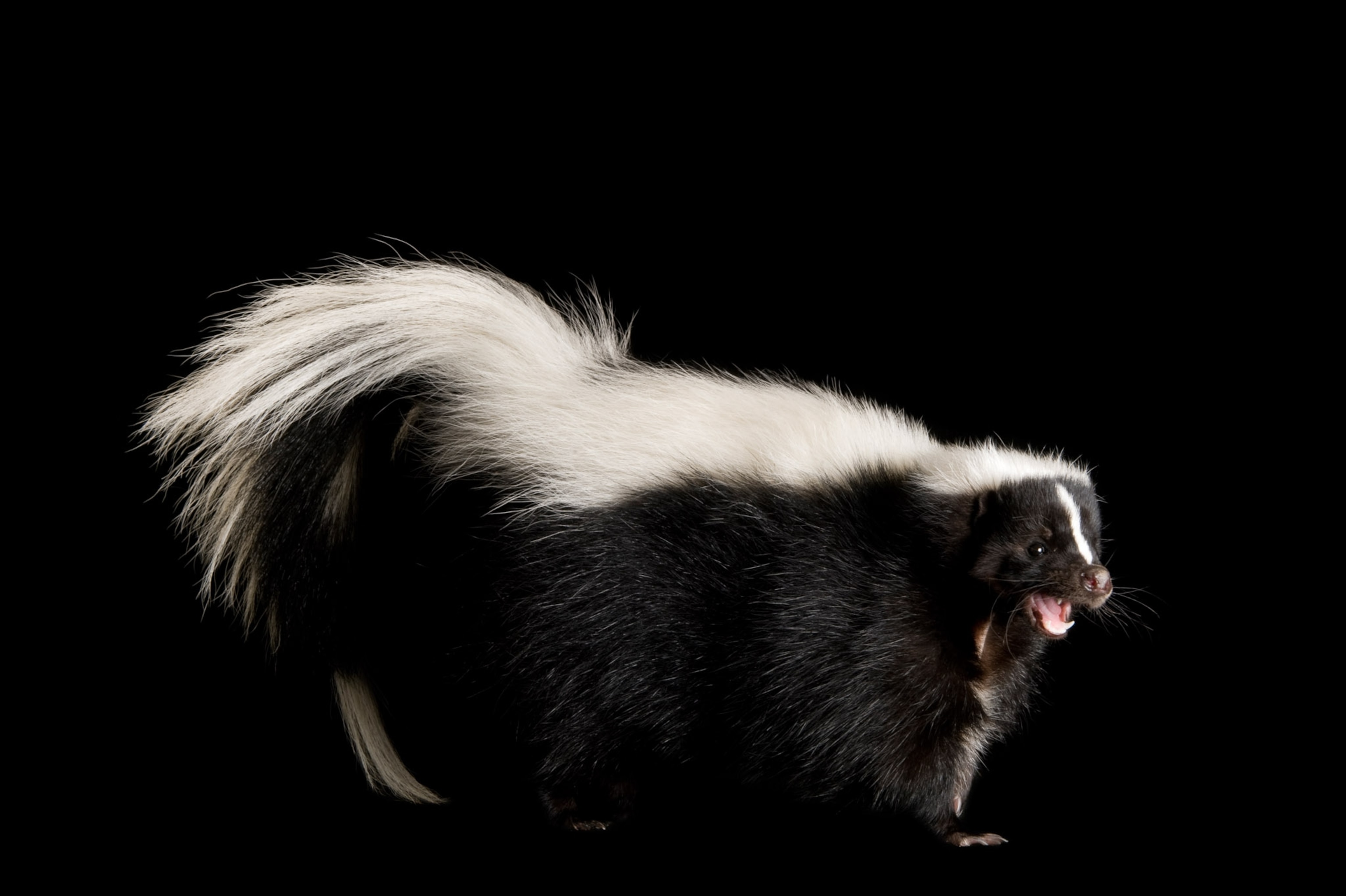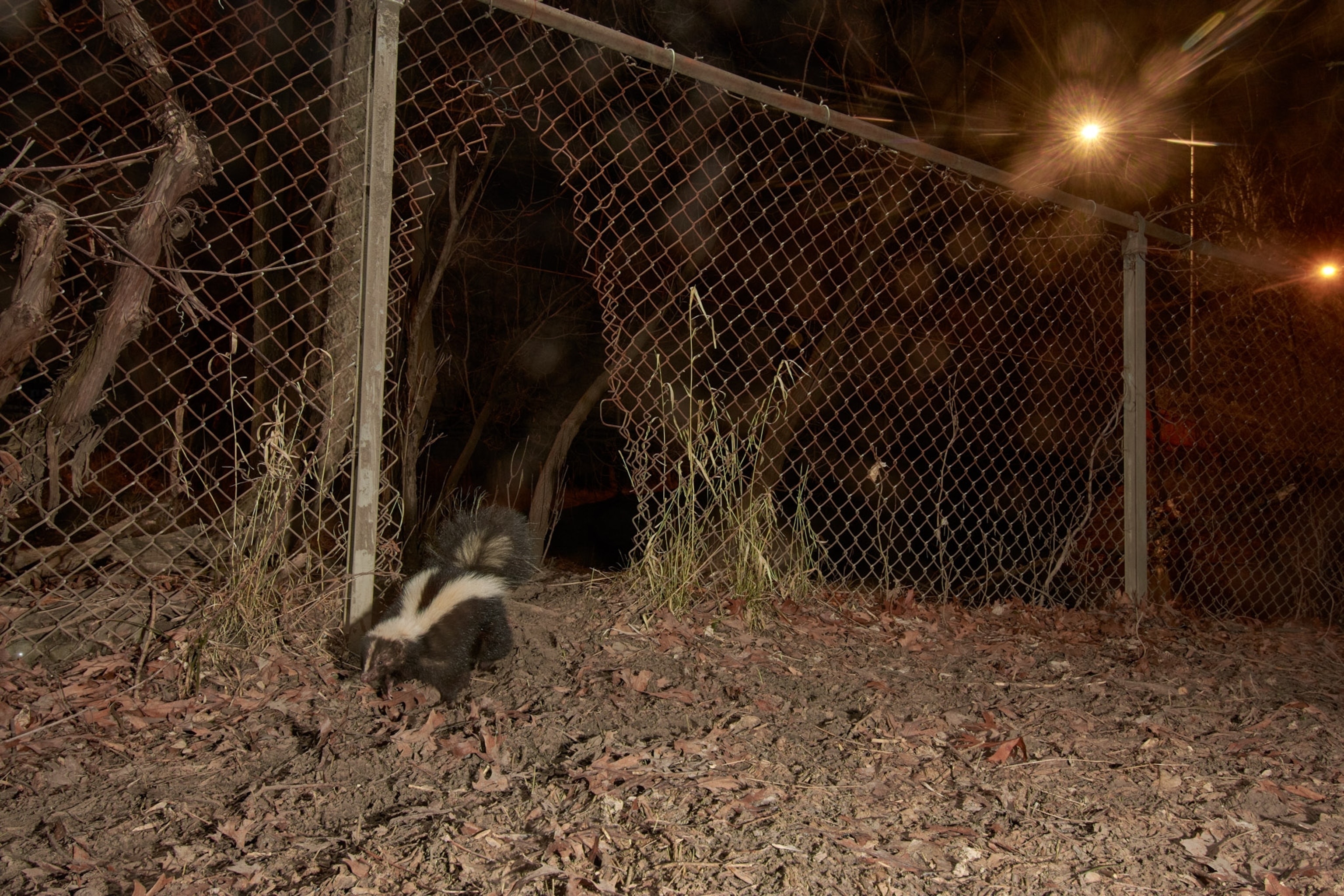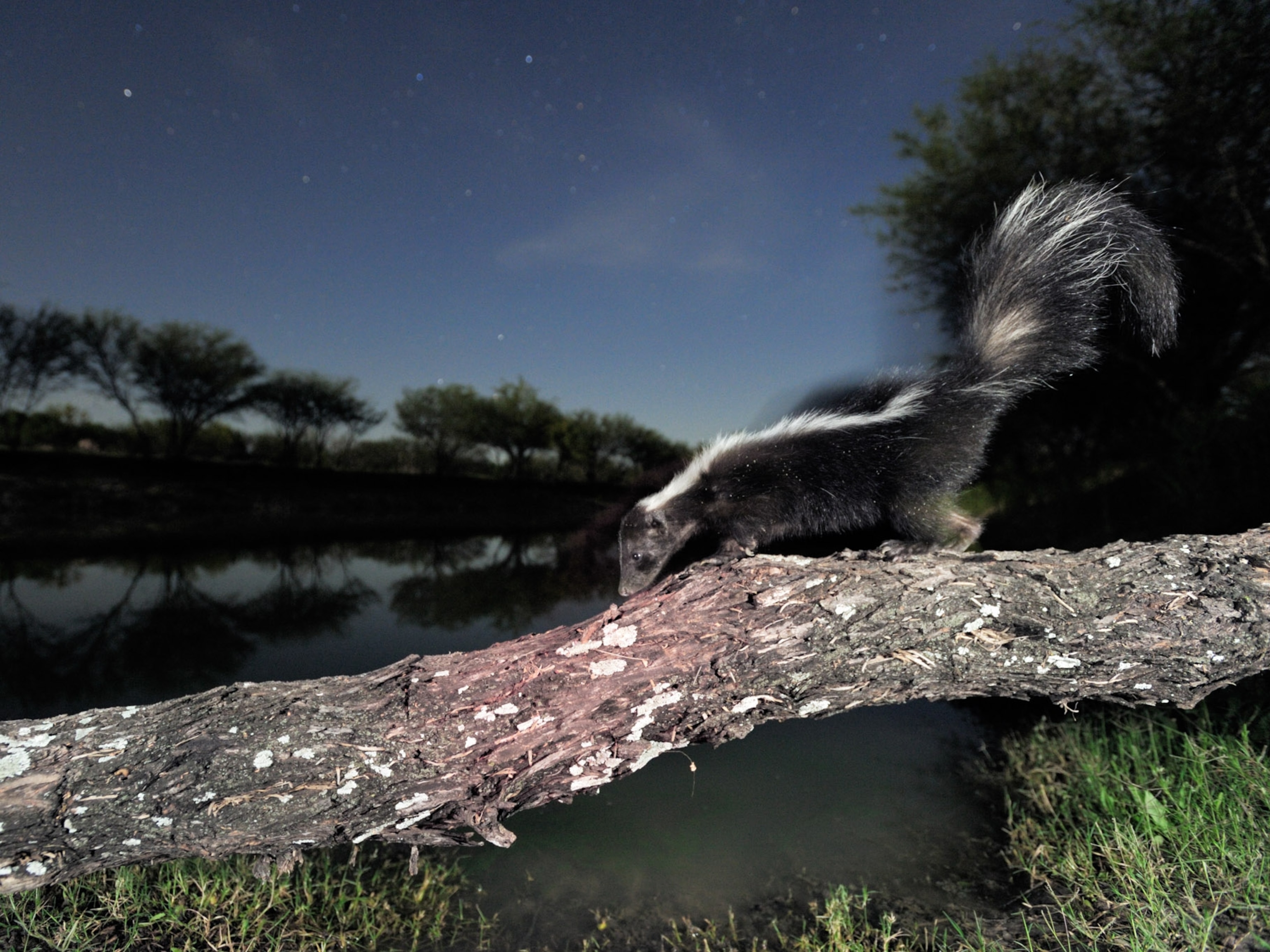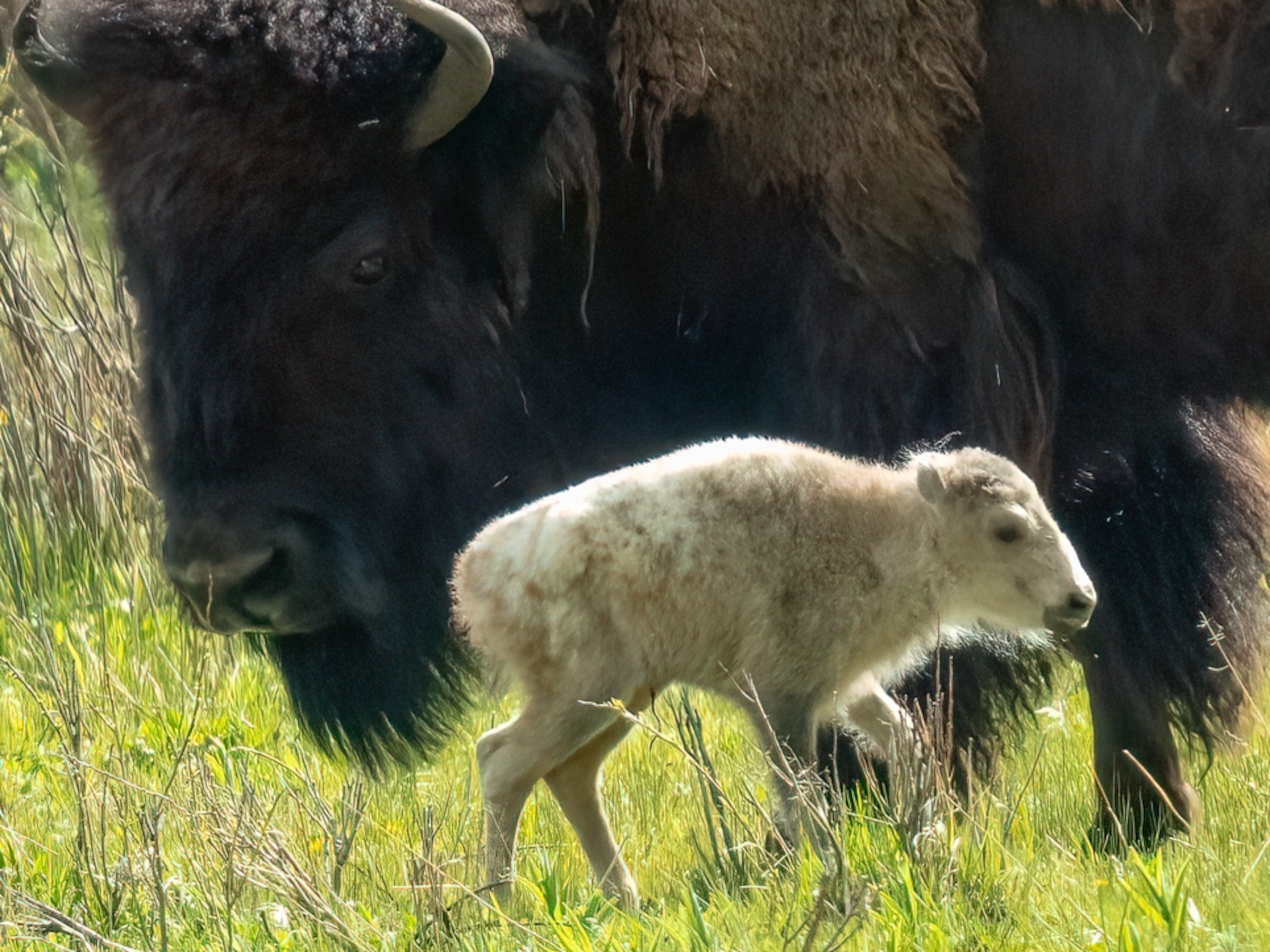
Skunks can lose their stripes—and now we might know why
Although they've long been known for their distinctive coats, a new study examines why some skunks are evolving to have different fur patterns.
Sometimes, conducting research means trekking to remote locales, braving wild beasts, and surviving treacherous weather. Other times, you may find yourself gently combing the fur of several hundred dead skunks.
“The things you do for science, right?” laughs Ted Stankowich, an evolutionary behavioral ecologist at California State University, Long Beach.
Stankowich studies aposematism, or warning colorations, like the bright colors that adorn coral snakes and poison dart frogs. Striped skunks, native to much of North America, sport some of the most recognizable colorations on the planet, with jet-black fur and white racing stripes that run from head to tail.
“It’s warning a predator that they have a strong, stinky defense,” he says.
But Stankowich and others have noticed something curious about striped skunks. The animals can possess different patterns, from a small patch of white on their heads to bold white stripes that merge into a cape-like pattern. There can even be all-white or all-black animals. (Read more about why skunks have stripes.)
This is odd, since “the more consistent your signal, the more the predator gets one image in their head”—and knows to avoid you, he says.
Now, a study published by Stankowich and his colleagues today in the journal Evolution may explain these varying patterns—and how we humans may be influencing them.
A change in stripes
Armed with scent glands that can squirt sulfuric secretions into a predator’s eyeballs, skunks are fortunate to not have as many natural predators as other similarly sized mammals.
Their foes generally include mountain lions, coyotes, jaguars, and bobcats, which are either hungry enough to risk the spray or who come upon a skunk with markings that don’t accurately convey the threat posed. (Interestingly, great horned owls don’t have a strong sense of smell, says Stankowich, and this may be one reason they take down more skunks than most other predators.)
By photographing 749 striped skunk skins in museums across the continent, Stankowich and colleagues recorded factors such as stripe length and pattern symmetry, and then compared them with other variables, such as the environments the animals and their potential predators inhabited. In the end, they verified a hunch.
“In areas that have really strong predation risk, both from birds and mammals, you get a much more consistent, traditional black animal with two long white stripes on the body,” says Stankowich. (See photos of animals with radiant colors.)
“But the really cool thing we were hoping to find, that we did find, was that as predation risk declines, you get much more variation in a skunk’s stripes,” he says. That makes sense, because if there aren’t many predators around, there’s less selection for strong warning stripes to get passed on through the generations.
“And so those fringe pattern animals can leave more copies of their fringe genes in the next generation, and therefore you get wider and wider variation in stripe patterns,” says Stankowich.
Jim Barnett, a behavioral ecologist at Trinity College Dublin in Ireland, says research on animal warning colors often focuses on small geographic areas or how specific predators interact with specific prey. That’s why he’s impressed by the continent-level scope of the new study.
“Studies like this give you this idea that we have this mosaic of selection pressures over North America,” says Barnett, who was not affiliated with the research.

Humans aren’t helping
Since people have hunted or outright eliminated predators across the United States, from mountain lions to wolves, it’s logical to ask if humans are to blame for skunks starting to look less skunk-like.
“I don’t want to go so far as to say that the humans are the cause of this variation by extirpating predators,” says Stankowich. “But we certainly aren’t helping.”
For one, he says that the study found a link between less predators and skunk stripe variation—not causation. Similarly, with museum specimens only representing skunks from the last hundred years, it’s difficult to make any conclusions about long-term patterns. (See how some people keep skunks as pets.)
“There’s been a complex history of huge mega-predators in North America that are no longer here,” says Stankowich.
“So it’s hard to say what the predation landscape looked like thousands of years ago, and how it might affect skunks now.”





